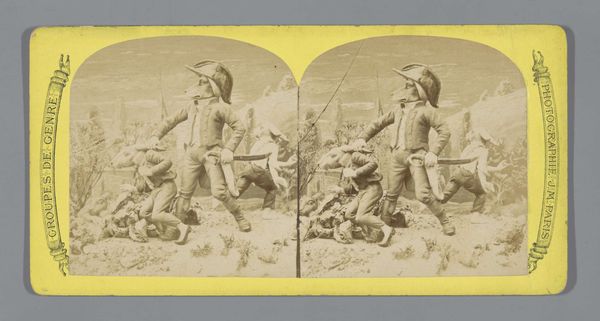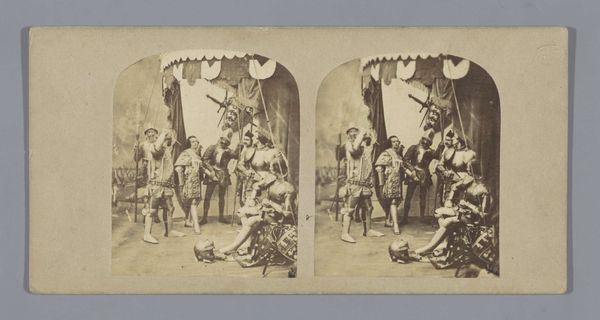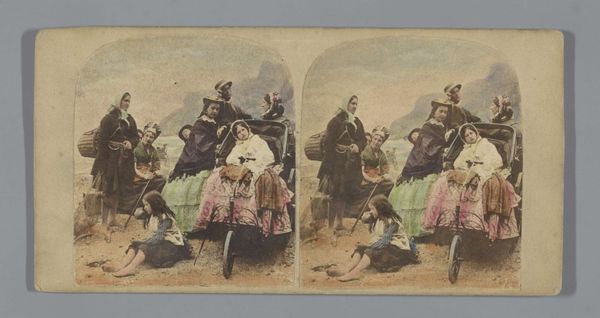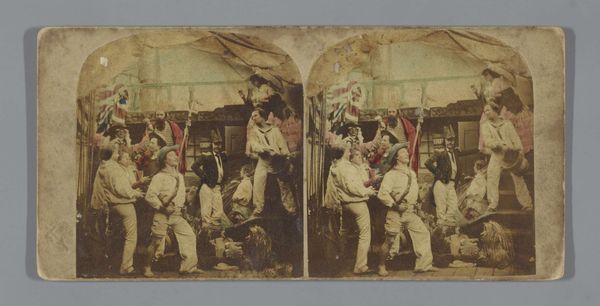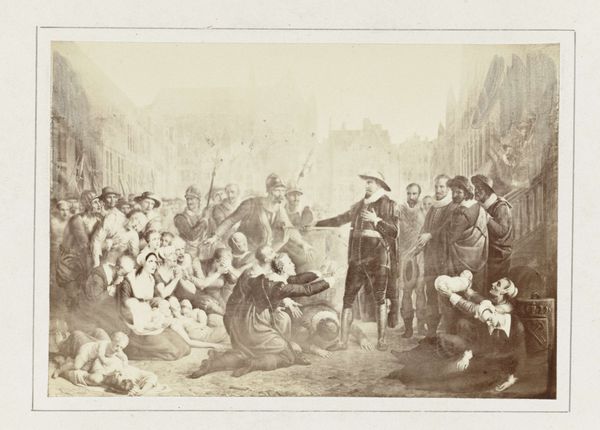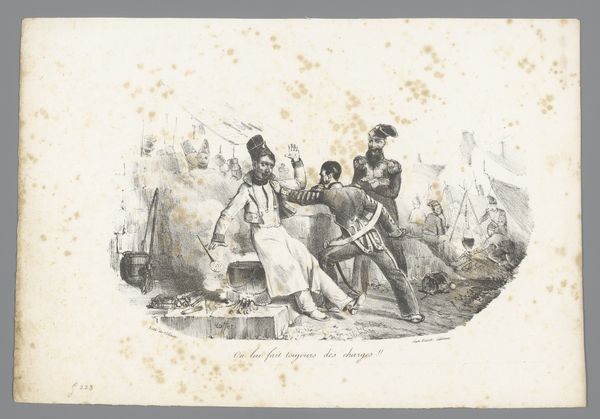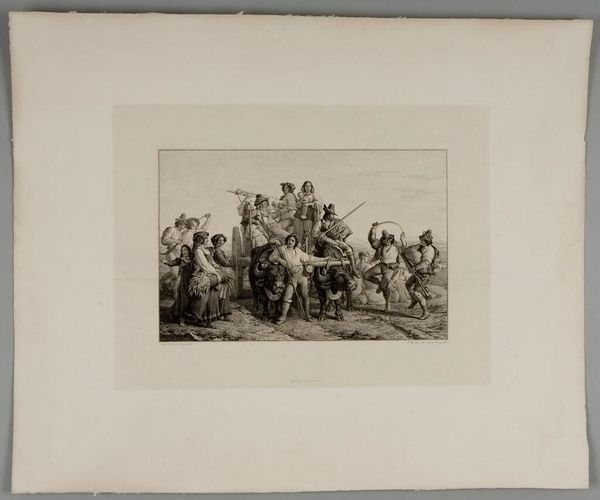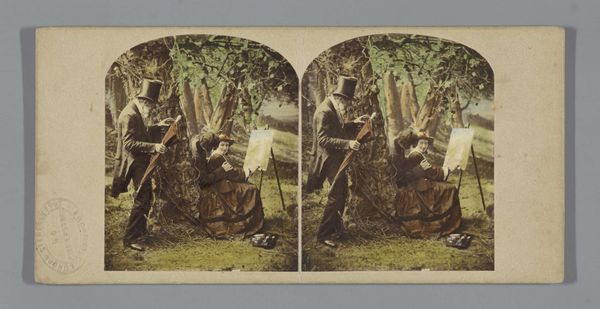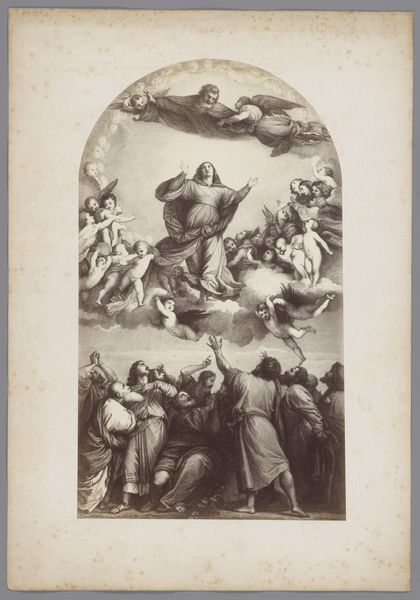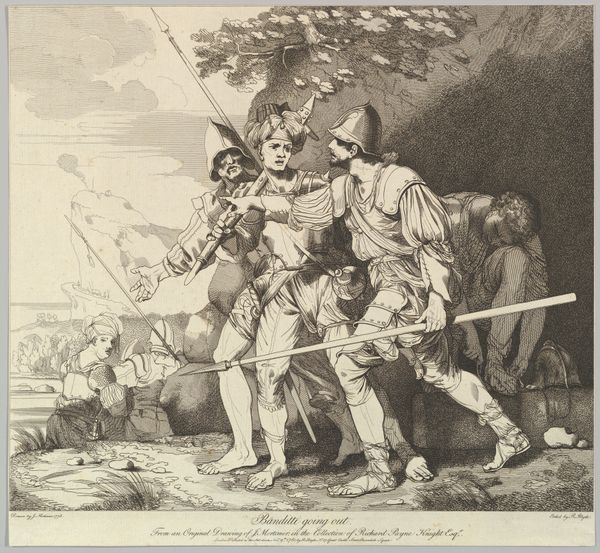
Dimensions: height 84 mm, width 174 mm
Copyright: Rijks Museum: Open Domain
Curator: This is "Joan of Arc taken Prisoner," a photograph from around 1858 by James Elliott. It's presented as a stereograph, meaning there are two nearly identical images side-by-side to create a 3D effect when viewed through a stereoscope. Editor: It’s quite theatrical, even melodramatic. There’s a stark contrast in textures, from the polished armor to what looks like rough stone of the fortress in the background. It seems heavily staged—constructed. Curator: Absolutely. The work clearly plays into the romanticised visions of Joan of Arc that were prevalent in the 19th century, examining her identity through a lens of both national pride and female victimhood within very specific patriarchal constraints. What choices are made to create an image? Editor: It raises questions about authenticity, right? This staged tableau references a historical event, yet it's mediated through photography, costuming, and performance. It makes me think about labor, especially if those costumes and sets are handcrafted—someone made all those things! Curator: And what does it mean to capture the image of Joan of Arc this way? I'm interested in exploring the implications for female leadership roles throughout time; what kind of symbolism and historical interpretations is produced or altered in this portrayal, in this medium? It shows a very vulnerable Joan, immediately raising questions of female agency throughout history. Editor: And the means of image production feed into this. Photography at this time involved elaborate chemical processes, demanding specific skills. Plus, the distribution of stereographs brought historical narratives into parlors for mass consumption. A powerful mix of industrial process and artistry here to reproduce many iterations of similar compositions. Curator: We should be encouraging analysis and study into this important female historical figure, her influence and representation throughout society today. These historical images often created gender and societal roles, still affecting perceptions now. Editor: Exactly! Looking closer, considering production, consumption, distribution… This photograph illuminates a web of labor, materials, and ideologies. It certainly encourages deeper critical engagement, rather than mere viewing, yes? Curator: I see it creating a starting point, inviting critical conversations regarding femininity, nationalism, and constructed historical narratives for contemporary contexts. Editor: Yes, all these facets feed into our better understanding of art production and the dissemination of those messages for mass consumption. Thank you.
Comments
No comments
Be the first to comment and join the conversation on the ultimate creative platform.

